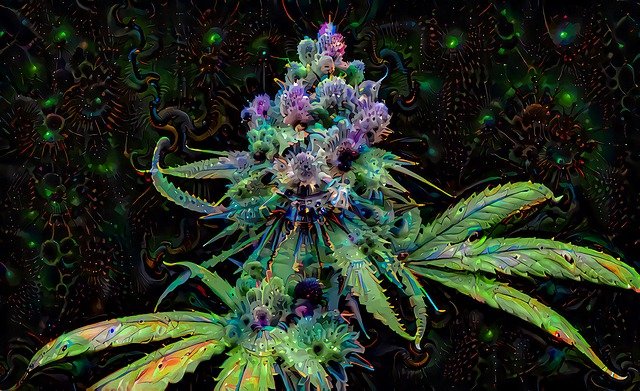Make More Terpenes With This Recipe.
Make More Terpenes With This Recipe: The term “terpene” can be found everywhere in the cannabis world. Terpenes are more popular than ever thanks to the world’s passion for cannabis science and research. It has even been proposed that its use will be one of the following significant booms in cosmetic marketing. So, let us discuss terpene production and why it is significant.
Why are terpenes important?
Terpenes play an essential role in how cannabis, mainly THC, affects the person who consumes it. Terpenes are primarily responsible for the effects of each strain. They significantly enhance the effects of THC and CBD by modulating their actions.
Terpenes are supposed to be responsible for the “entourage effect,” which is described as an orchestra of cannabinoids and terpenes working harmoniously. Even while they all contain comparable terpenes, the different percentages of a terpene blend can lead one strain to treat neuropathic pain another to help with insomnia. Yet, another to help with chronic fatigue. Regrettably, conventional medicine is not built to cope with numerous components in a single drug, and cannabis extracts include hundreds of them.
A higher terpene level indicates higher quality products, more significant therapeutic potential, and a more pleasurable experience. Terpene content increases the excitement, tastiness, and potency of cannabis extracts. Their interest grew after Dr Ethan Russo’s work for GW Pharmaceuticals in 2011. While the cannabis community has thoroughly embedded this knowledge in the culture, it may not have reached its pinnacle in the broader pharmaceutical, medicinal cannabis formulations.
One of the most intriguing aspects of cannabis terpene production is that the plant synthesizes terpenes early in its life then re-synthesized them into more complex terpenes. This understanding demonstrates why it is beneficial to keep plants in good health throughout their lifetimes.
How to make essential oils in a perfect environment
While the plant has the genetic code to make terpenes, they cannot be produced unless the requisite elements are present in the soil or other growing media. Growing media does include the appropriate N-P-K ratio, but it won’t get you very far.
Beneficial bacteria, fungi, and microorganisms should be present in healthy soil. These biological components make the soil fruitful and carry out processes that convert raw waste elements into bioavailable plant nourishment. As a result, many farmers nowadays refer to “feeding the soil” rather than “feeding the plants.” Our guide on making your organic soil will help you learn what it takes to make a strong foundation of homemade soil.
So, how can you ensure that your soil is thriving with the beneficial additives required to take cannabis’ fragrant characteristics to the next level?
Lactobacillus Serum is a straightforward approach to manufacturing soil additives. It’s not easy, but inexpensive goes a long way and is entirely practical. A year’s supply can be made for less than £10.
Plants are not the only ones who benefit from probiotics.
If you take probiotic pills for your gut health, you’ve probably heard of this brand. Bacteria that live in your gastrointestinal system help keep you healthy in general. A little-known feature about Lactobacillus is that eating it increases the number of cannabinoid receptors in your gut.
Those who often use canna-capsules or take drugs should ensure that they consume a sufficient amount of these helpful microorganisms. This could increase the potency of the cannabinoids you ingest. Wouldn’t it be great if your harvest could go further or be more effective? Fermented foods like sauerkraut, pickles, sourdough, and other healthy delights contain approximately 90% of the germs found in honey. Let’s look at how to create them for a fraction of the cost of what you’d get in a health food store.
Lactobacilli, an anaerobic bacterium, are seen in Lactobacillus Acid Serum (LABS) (anaerobic). Numerous Lactobacillus strains can compost and decompose a wide range of materials. Because of this, they are a good way to replenish the soil’s nutritional levels.
I’ll describe a method I was shown a few years ago.
Ingredients
Rice
Water with minerals
Milk
Molasses
Equipment
Bucket
Pitcher
String/elastic tape
Syringe/pipette
Towel for the kitchen
jar/bottle made of glass
1st step:
Prepare a rice wash. This is relatively straightforward. Take a handful of rice and a glass of water. In the water, wash the rice. Drain the rice but save the water – that’s what you’re looking for. Because microbes thrive on carbs, we must set a trap. Cook the leftover rice for dinner later.
Step two:
In a glass trap, collect the bacteria. Fill a glass jar halfway with rice pudding wash. Use a clean cloth or a kitchen towel to cover it. It’s important that the jar’s sides are completely sealed. A rubber band or string is proper. This keeps the dirt out while allowing the bacteria in the air to enter the jar and start eating the starch. Spot the jar in a dry place with plenty of fresh air. Three layers will appear after a few days. A layer of foam on top (which you do not want). Microbes in liquid form at the centre (this is desirable). Sediment on the seafloor (this is also undesirable).
Third step:
Gather the liquid microorganisms. Take off the cloth. Aspirate the middle layer of liquid from the glass trap with a syringe. This will have a bit sour smell, which is acceptable. It signifies that it was successful. Make sure that you don’t disrupt the bottom sediment. Because you’ll have plenty to work with, it’s fine to leave some liquid in the jar.
4th step:
Mix in the liquid bacteria with the milk. Lactose in milk acts as a glucose source for lactobacilli. Close the bucket with a lid and set it aside for 5-7 days at a consistent temperature. This will give the serum adequate time to develop. The whey separates from the lactose during this procedure, leaving two layers. On top is a curd, and underneath is a liquid serum.
5th step:
Remove the bucket’s lid and carefully remove the curd layer from the top. It will most likely dissolve, so don’t be too concerned. After removing it, strain the residual serum with a cloth or an old t-shirt (make sure it is clean). Because this is the beginning of the cheese-making process, it will smell like cheese. You’re ready to go once your liquid has split and is clear of lumps. Hopefully, you are on your team’s compost at home and have composted the curds. It still has a high concentration of helpful microorganisms. If you have a dog, feed some of it to him. They adore it – they go crazy for it – and it’s beneficial to their intestinal health! God bless grass-fed animals.
Sixth step:
Use it as is or store it in a bottle for long-term use. At this point, you can store it in the refrigerator in a glass bottle or jar for up to a year without noticing any apparent degeneration. It will preserve for several years at room temperature if mixed in a 1:1 ratio with molasses. I would create this mixture at least once a year rather than rest for two years – it’s always better to keep these microorganisms fresh and protect the quality.
How to Use LABS to Produce Terpenes
This is strong stuff! You only need 1-3ml per 10l of water to inoculate the soil with Lactobacillus enough to boost soil biology.
As little as 0.1ml per litre of water can be used as a foliar spray. If you use too much, your room will smell like a farm or a cheese factory for the following 24 to 48 hours.
It’s fantastic to observe how more alive your plants appear after adding this old yet prolific bacteria. It’s difficult to put into words, yet they feel more alive.. Within a week to ten days, you should detect indicators that it’s working because the stems will become a little stickier, and if you sniff them with your fingers, you should sense an improvement in the aromatic intensity.
It is not necessary to add it at each feeding. Inoculating the soil every two weeks is sufficient to avoid the colonisation of dangerous microorganisms.
The post Make More Terpenes With This Recipe. appeared first on https://gqcentral.co.uk




